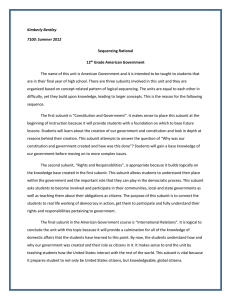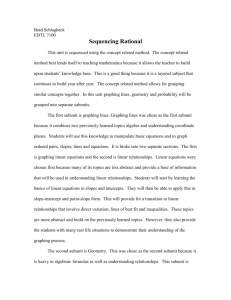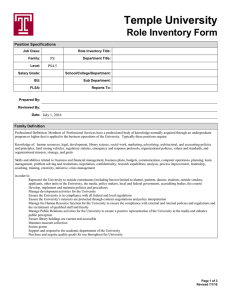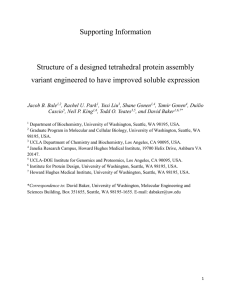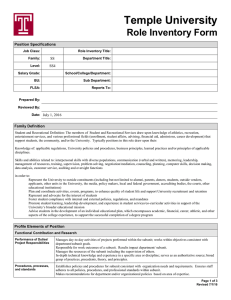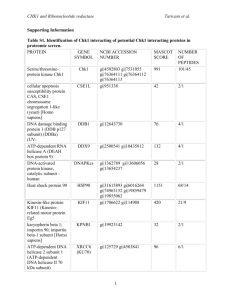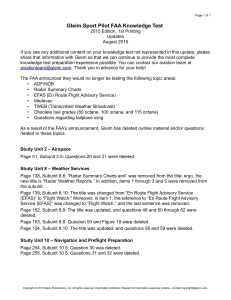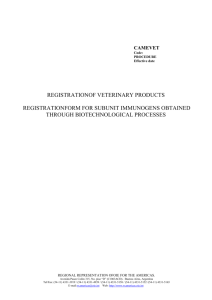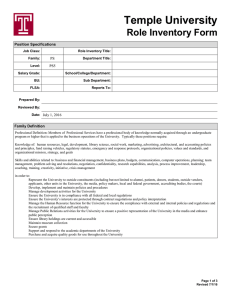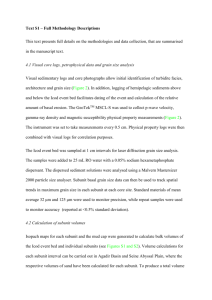Sequencing Rationale
advertisement
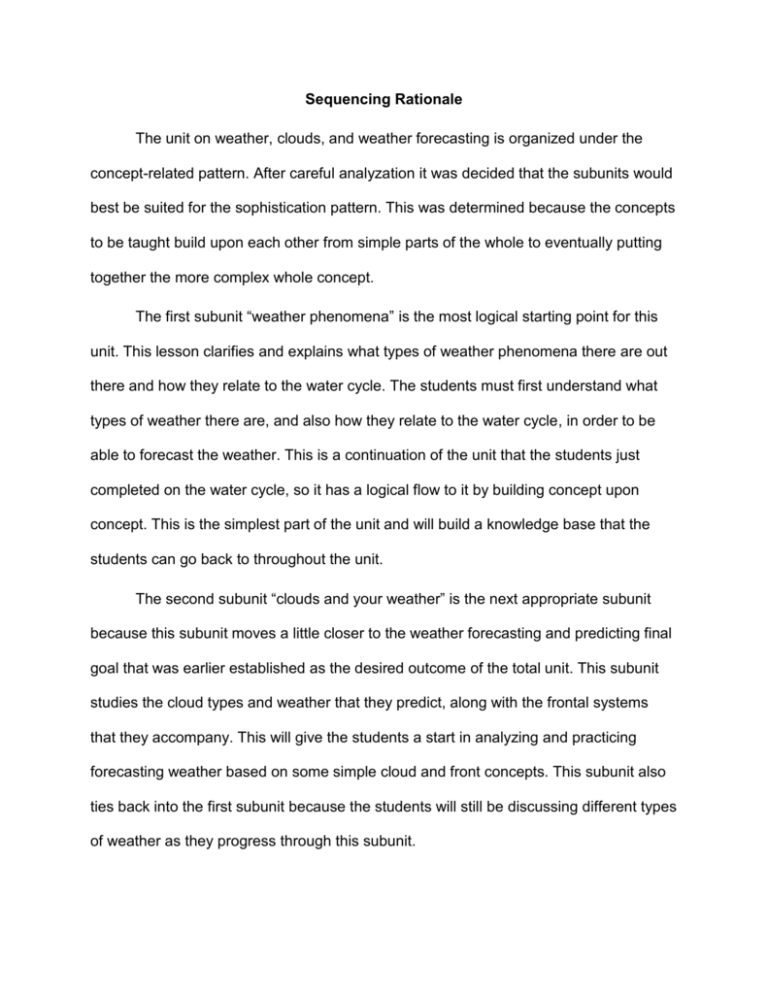
Sequencing Rationale The unit on weather, clouds, and weather forecasting is organized under the concept-related pattern. After careful analyzation it was decided that the subunits would best be suited for the sophistication pattern. This was determined because the concepts to be taught build upon each other from simple parts of the whole to eventually putting together the more complex whole concept. The first subunit “weather phenomena” is the most logical starting point for this unit. This lesson clarifies and explains what types of weather phenomena there are out there and how they relate to the water cycle. The students must first understand what types of weather there are, and also how they relate to the water cycle, in order to be able to forecast the weather. This is a continuation of the unit that the students just completed on the water cycle, so it has a logical flow to it by building concept upon concept. This is the simplest part of the unit and will build a knowledge base that the students can go back to throughout the unit. The second subunit “clouds and your weather” is the next appropriate subunit because this subunit moves a little closer to the weather forecasting and predicting final goal that was earlier established as the desired outcome of the total unit. This subunit studies the cloud types and weather that they predict, along with the frontal systems that they accompany. This will give the students a start in analyzing and practicing forecasting weather based on some simple cloud and front concepts. This subunit also ties back into the first subunit because the students will still be discussing different types of weather as they progress through this subunit. The third and final subunit in this weather unit is “weather forecasting.” In this unit the students will work hands-on at several lab stations that explain and demonstrate various aspects of our atmosphere that actually cause the weather around us. This will give the students an in-depth look into the weather causing events that cannot be seen with the naked eye. This subunit will cause the students to go beyond just predicting weather, but also determining why some types of weather occur and the intricate parts of forecasting the weather. The students will be required to analyze and apply this subunit towards the final complex goal of being able to forecast he weather based upon barometric pressure, frontal systems, cloud types, temperature changes, etc. This subunit will ultimately end the unit on weather with the students becoming amateur meteorologists.
